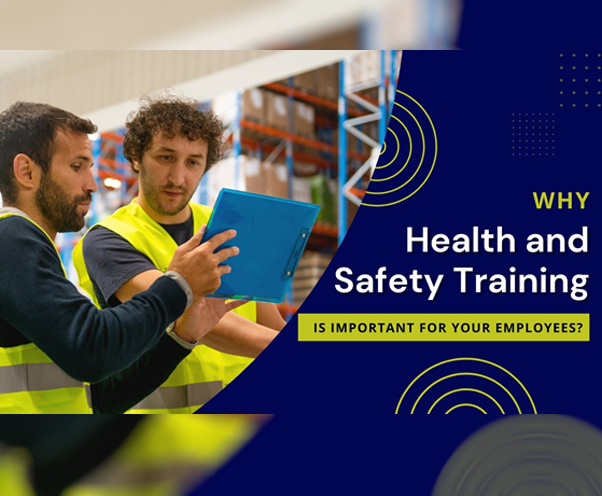The Crucial Role of Health and Safety Training and Why It Is Essential?

The safety and well-being of employees should always be one of the top priorities for any organisation.
To ensure a safe work environment, health and safety training for workers is crucial. Training will equip employees with the knowledge and skills necessary to identify and mitigate workplace hazards, prevent accidents and injuries, and help them to respond effectively in emergencies.
For employers there is the additional benefits of reducing workplace absenteeism and reducing the risk of legal action in the event of any incidents.
Let’s break this down to the key points.
Identify & Mitigate Workplace Hazards
We use the Risk Assessment process to identify and mitigate workplace hazards and this will more often require having competent persons at every level of the organisation.
Competence can be described as the combination of training, skills, experience and knowledge that a person has and their ability to apply them to perform a task safely. Both Risk Assessment and Competence underpin most health & safety legislation.
Preventing Accidents and Injuries
Health and safety training empowers workers to recognise potential hazards in their workplace and take appropriate precautions. By understanding safety procedures and being aware of dangerous situations, employees can significantly reduce the risk of accidents and injuries. Effective training ensures that workers and employers are compliant with legislation, thereby avoiding potential legal issues and claims for compensation. When workers are confident in their safety knowledge and feel secure in their workplace, they can focus more on their tasks. This can lead to increased productivity as they are less distracted by safety concerns.
Responding to Emergencies
Health and safety training often includes instruction on responding to emergencies, such as fires, chemical spills, or medical incidents. Emergency Preparedness, as its often termed in ISO standards, can be crucial in minimizing damage and ensuring everyone’s safety in critical situations. Fire safety training which includes an element of emergency evacuation, also covers fire prevention which is invaluable in ensuring that workplaces are fire safety compliant and can operate effectively and safely.
Compliance With Legislation
Safety legislation is full of words such as training, competence, information, knowledge to name but a few. The main reason we have health & safety legislation is to prevent workplace injuries and illnesses which can result in misery for injured parties and their families, substantial costs for employers, including workers’ compensation claims, medical expenses, and lost productivity. Effective training can help reduce employee misery and employers’ costs by preventing accidents and injuries.
Reduction of Absenteeism
A safer workplace is likely to have fewer incidents resulting in worker injuries or illnesses. This can lead to reduced absenteeism due to health-related issues, which can disrupt work schedules and affect productivity. Workers who receive health and safety training gain valuable skills that can be transferable to other jobs and industries. These skills can enhance their employability and career prospects.
Reducing Risk of Legal Action
Effective training ensures that workers and employers are compliant with legislation, thereby avoiding potential legal issues and claims for compensation. In the event of an accident or injury, a company that has provided comprehensive health and safety training to its workers may have legal protection. It will be able to demonstrate that it took reasonable steps to ensure a safe work environment.
First Aid Training
First aid training also falls into the category of Emergency Preparedness and it is also a legal requirement for all employers to appoint someone to take charge of first aid arrangements. The appointed person does not need any formal training however depending on the nature of your work and your location, you may decide that formal first aid training is appropriate.
Summary
Nowadays, much can be achieved online via e-learning courses aimed at a large proportion of staff. Some of these are very sophisticated ensuring the trainee is engaged and allowing them to work at their own pace. It’s not always the ideal solution and more specialised training I would argue should still be delivered face-to-face, so that trainees have an opportunity to ask questions and receive feedback on their newly-developing skills. Of course a good trainer will keep trainees fully engaged thus removing the need for matchsticks to prop up eyelids!
(This "HSE" Published in February 2024 Edition)












